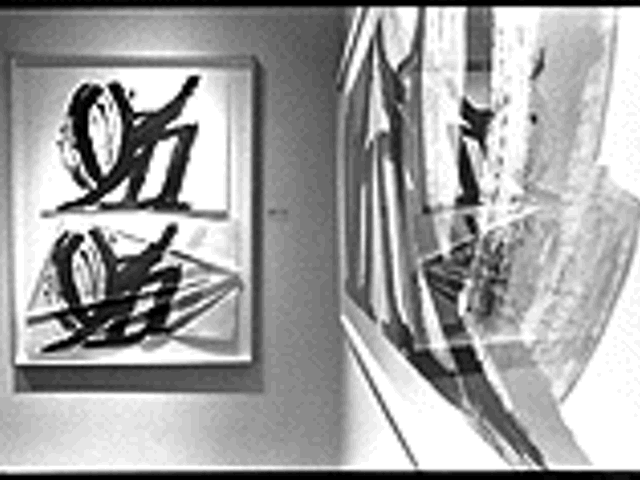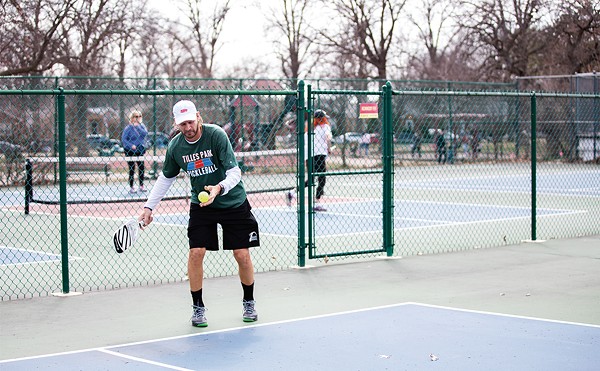The experience of being an outside observer or a tourist — at once scrutinizing a foreign culture and being scrutinized by an indigenous population — is at the heart of this show. How do you sum up that experience? How do you ship it home? Carter and Giles ought to know. After graduating from the School of the Art Institute of Chicago, they spent time in Bali, Indonesia and India, learning from indigenous art and culture.
At the same time, they learned by watching themselves look. They seem to have reflected in depth on the practices that outsiders employ to understand the unfamiliar. One of these practices — familiar to us all — is to photograph that which we see. But there's a funny thing about tourist photography, something that Susan Sontag wasn't the first to observe in her cutting seminal essays in On Photography. Photography reduces everything, every object and every experience, to a standardized, containable format. It makes the unfamiliar manageable, and it's debatable whether that's a good or bad thing.
An oddball collection of smallish sculptures in this show investigates the same phenomenon. Carter and Giles have fashioned various things they saw in their travels — thong sandals, a scorpion, a dwelling on stilts, a campfire — from neutral-colored chipboard. A set scale, around 16 inches high, is maintained with each object. Like the photograph, these sculptures render wildly varied objects in a neutralized, consistent fashion. The works seem comical, ineffectual, evidence of what happens when a standardized system is used to interpret rather complex information.
Taken as a group, Carter's and Giles' works attest to the frustration experienced by an outsider in an unfamiliar culture and to the futility of attempts to artificially contain that culture. But Giles and Carter have clearly also learned much from their stints in these exotic places. "Self Portrait as a Crowd of Onlookers," a really intriguing work by Giles, is proof of that. Giles learned to paint with spices — that is, to use a silkscreen to create ephemeral powder images. This series of self-portraits is rendered in salt and turmeric, with the jarring juxtaposition of white and deep yellow adding to the intensity of the images. Dozens of these small self-portraits litter the floor, and viewers are expected to step around them, looking at the images as the portraits of Giles look back.
The self-portraits, only a few days old, already show the marks of gallery visitors. People have evidently run their fingers through the powder or stepped accidentally on the images. Giles expects this. The collection of portraits will bear the mark of the observers, just as Giles herself was affected by the people she observed during these travels.
The single drawback to this absorbing show is precisely its strength: Its conceit, the fact that the works come out of specific experiences in faraway places, is fascinating, but the works make no sense unless you understand it. A word to visitors: Inform yourself about this show. Then go and enjoy some insightful, entertaining and enlightening observations about the process of looking, and being looked at.
Viewfinder is on exhibit at the Webster University's Hunt Gallery through Oct. 2.





